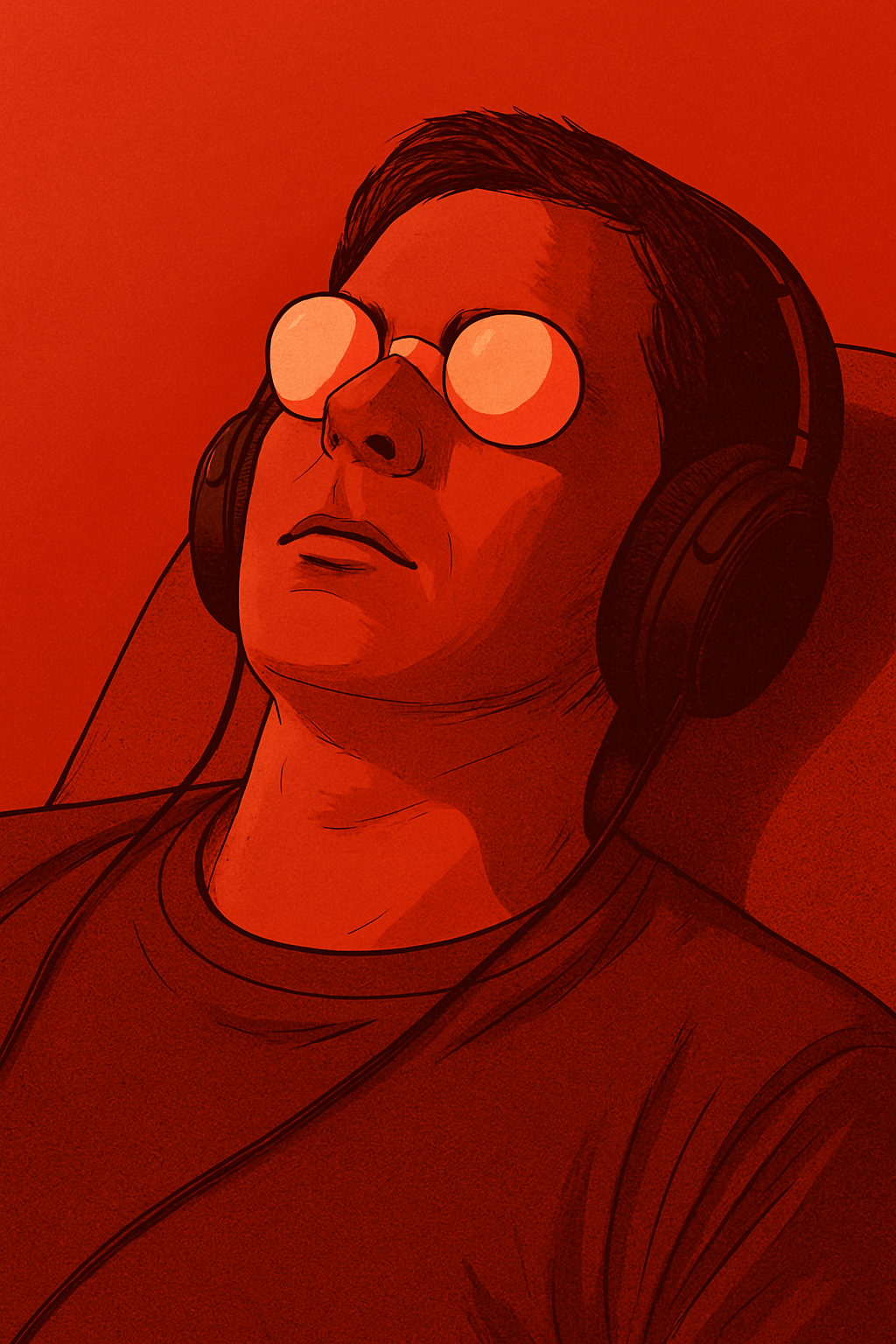Ganzfeld Experiment #
A minimal-stimulus gateway to hallucination and anomaly
Short Overview #
The Ganzfeld (German for “complete field”) is a simple but powerful sensory manipulation technique developed in the 1930s and later used in parapsychology experiments to test for extrasensory perception (ESP). By immersing yourself in unstructured light and sound while cutting off other sensory input, the brain begins to generate its own internal content—leading to spontaneous visuals, auditory hallucinations, and altered states.
Theory #
The Ganzfeld state is achieved by flooding the visual and auditory systems with undifferentiated, monotonous input. Typically, this means staring into a uniform light field (like a red-tinted glow) while listening to white or pink noise through headphones. With nothing meaningful to process, the brain ramps up internal activity—similar to what happens in float tanks or dreams.
Psychologists call this a perceptual deprivation state. It can produce:
- Vivid geometric or symbolic visuals
- Sudden images, scenes, or faces
- Audio hallucinations, like voices or tones
- Unusual emotional shifts or intuitive flashes
Parapsychologists also used the Ganzfeld to test for telepathy and remote viewing, often reporting results1 above chance2—though the evidence remains controversial3.
How to Do the Ganzfeld Technique #
- Prepare your setup – You’ll need a bright but diffuse light (e.g. red LED lamp and ping-pong ball halves), headphones with white noise or pink noise, and a quiet space.
- Cover your eyes – Cut a ping-pong ball in half and tape each half over your eyes, or use soft translucent glasses. The key is to eliminate any patterns or variation in what you see.
- Put on white noise – Play a continuous noise track through headphones to drown out external sound.
- Lie back and relax – The experience usually unfolds after 10–30 minutes of stillness.

Participant in a classic Ganzfeld setup with ping-pong ball eye covers, headphones playing white noise, and red diffuse lighting.
Optional: record yourself describing what you see and hear aloud. Some researchers used this method to capture spontaneous imagery during parapsychology studies.
Expected Outcomes #
- Mild to vivid hallucinations (visual and auditory)
- Emotional insight, strange thoughts, or dreamlike impressions
- A soft trance state—like falling into a waking dream
Risks & Considerations #
- Can cause anxiety or disorientation in some users
- Not recommended for those with psychosis or severe dissociation
- Eyes can become dry or fatigued—don’t force long sessions
Variations & Extensions #
- Red Light Hypnagogia – Use a solid red light to enhance depth and contrast
- Group Ganzfeld – Try in pairs, recording impressions and comparing after
- Ganzfeld + Breathwork – Add rhythmic breathing for deeper access to visuals
Further Exploration #
- Research by Charles Honorton and the Princeton Engineering Anomalies Research Lab (PEAR)
- Compare with float tanks, black mirror gazing, or the Dreamachine
- Explore related techniques in psi research and altered state induction
Call for Reports #
What did you see in the void? Did anything unexpected emerge?
Help Build the Field
Have you tested this technique? Share what happened – whether it worked, failed, or took you somewhere weird.
Submit Your ReportDaryl J. Bem & Charles Honorton (1994). “Does Psi Exist? Replicable Evidence for an Anomalous Process of Information Transfer.” Psychological Bulletin, 115(1), 4–18. ↩︎
Lance Storm, Patrizio Tressoldi & Lorenzo Di Risio (2010). “Meta-analyses of free-response studies, 1992–2008: Assessing the noise reduction model in parapsychology.” Psychological Bulletin, 136(4), 471–485. ↩︎
Ray Hyman (2010). “Meta-analysis that conceals more than it reveals: Comment on Storm et al. (2010).” Psychological Bulletin, 136(4), 486–490. ↩︎